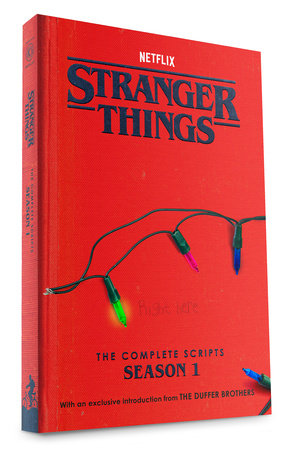Excerpt
Stranger Things: The Complete Scripts, Season 3
IntroductionWhen season two of Stranger Things released in October 2017 to positive reviews and responses, we felt a huge relief. We had proven—to ourselves and our audience—that season one wasn’t a fluke but was a story worth continuing. There was, of course, one confidence shaker—the much-debated episode “The Lost Sister”—which had landed with a deafening thud.
But we were determined to not let it throw us. In fact, heading into season three, the first thing we told our writers was “We can’t be afraid to make more big swings. We’ll make more mistakes, without question, but the biggest mistake we could make is playing it safe.” The show needed to continue to change and evolve and surprise.
The question then became, Where should it go next?
The answer, it turned out, lay in our shooting schedule. Because of season two’s fall release, we were set to shoot season three during the summer—the first time we’d filmed outside the usual fall and winter seasons, with leafless trees and overcast skies. Visually, the show was going to look very different. So rather than fight that shift, we leaned into it. This was our opportunity to show a different side of the eighties—neon lights, vibrant colors, poppy pop music, swimsuits, short shorts.
We started thinking about the summer movies we grew up loving:
Jurassic Park, Indiana Jones, Die Hard, Back to the Future,
Fast Times at Ridgemont High, Romancing the Stone. What if we embraced that spirit—not just in look and tone, but in scope and scale? What if we pushed the show into full-blown blockbuster territory: big monsters, big villains, big laughs, big action? It would still be
Stranger Things, but
Stranger Things on neoncolored steroids.
As we left to do some press, we asked our writers to brainstorm some summer specific ideas. What new locations and characters might we explore? When we returned a week later, the whiteboard was smothered in ideas. There was, of course, the obvious slam dunks, like the Hawkins pool. But one idea stood out at the very top of the list: a mall.
Instantly, childhood memories came flooding back. Growing up in Durham, North Carolina, we’d spent countless hours at South Square Mall—slurping down Orange Juliuses in the food court, gawking at the games in Babbage’s, flipping through CDs at Sam Goody. We knew right away: Hawkins was going to get a mall, and it would play a central role in the story.
With Starcourt as our anchor, the season rapidly began to take shape. We added some new characters, including the “evil Russians”—an idea we had seeded with Murray in season two— and, of course, Robin Buckley, Steve’s sarcastic, whip-smart, and proudly uncool co-worker. She was initially inspired by a young Janeane Garofalo, but a long casting process eventually led us to the incomparable Maya Hawke. Her personality reshaped the character entirely. A suggestion by our writer Kate Trefry to make Robin gay transformed her from a conventional love interest into something far more complex and ultimately led to one of our favorite scenes in the entire series: her coming out to Steve in the Starcourt bathroom.
But beneath all the summer fun, we wanted the season to carry an undercurrent of sadness and pain. The kids in the show weren’t quite kids anymore. They were in one of the most awkward stages of life—caught in the messy transition from childhood to young adulthood. It’s a confusing time, and one we ourselves had struggled with. Your body is changing in uncomfortable ways, stuck awkwardly between two points, and the social pressure to “be cool” intensifies dramatically. In the search to find yourself, you sometimes have to lose yourself first.
That tension—the painful process of growing up and leaving childhood behind—became the emotional engine and heart of the season. Combined with our new aesthetic, season three started writing itself, faster than any season before. We’d never had so much fun writing the show—before or since.
While we know this season is often debated, and sometimes criticized, for its sharp tonal shift, that shift was a deliberate choice: to capture, one last time, a celebration of childhood before it ends—and a much darker journey begins.
For now, we hope you enjoy revisiting these scripts. We had a blast writing them, and we hope you have just as much fun reading them.
Over and out,
Matt and Ross Duffer













